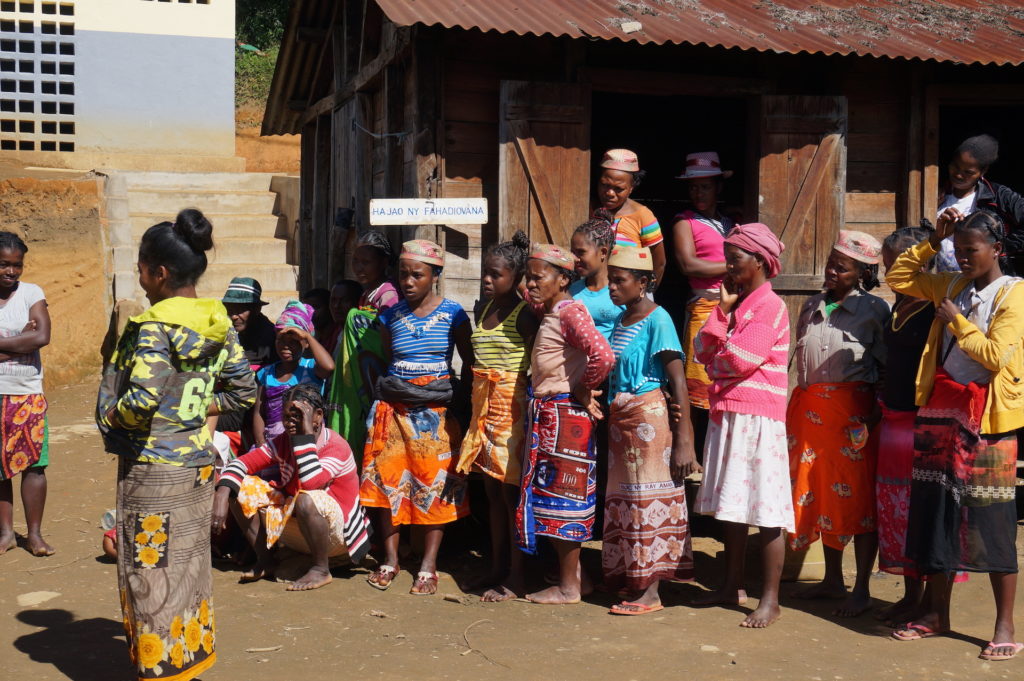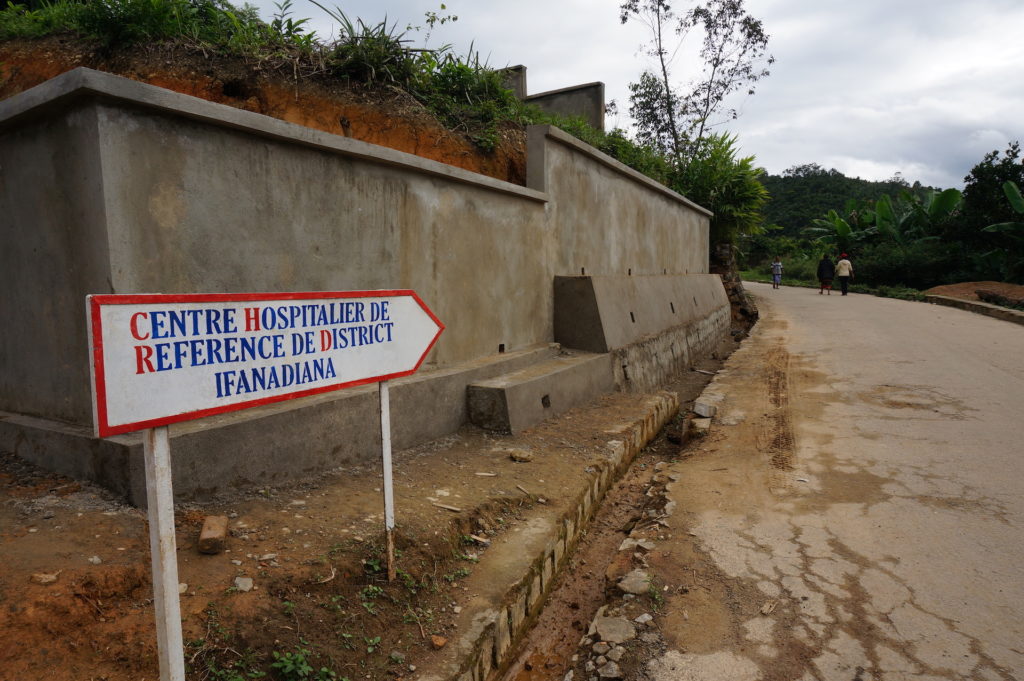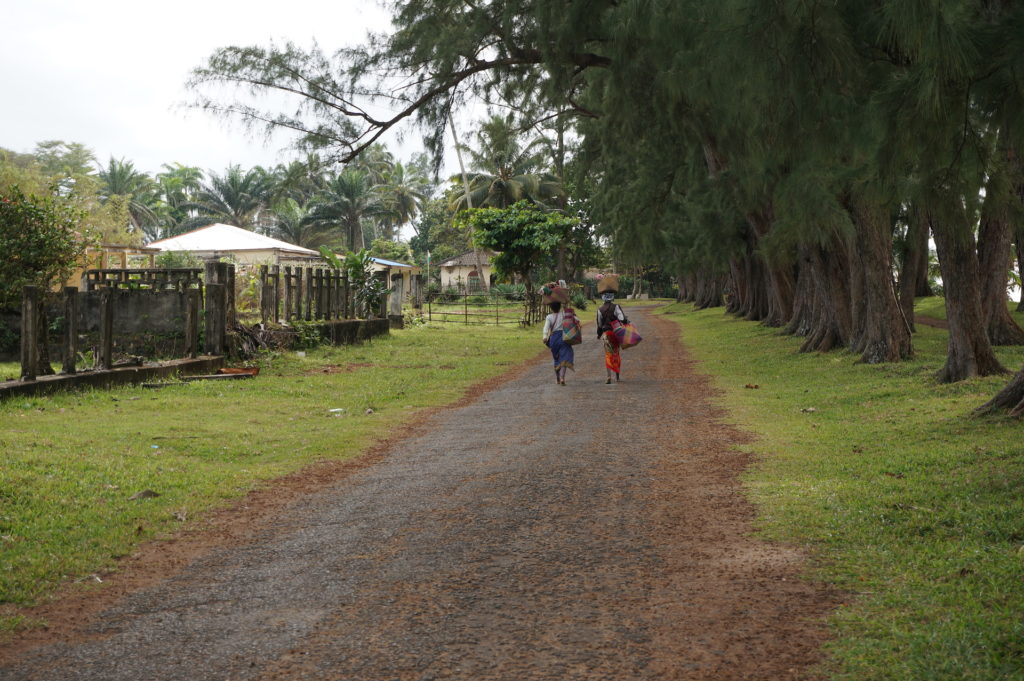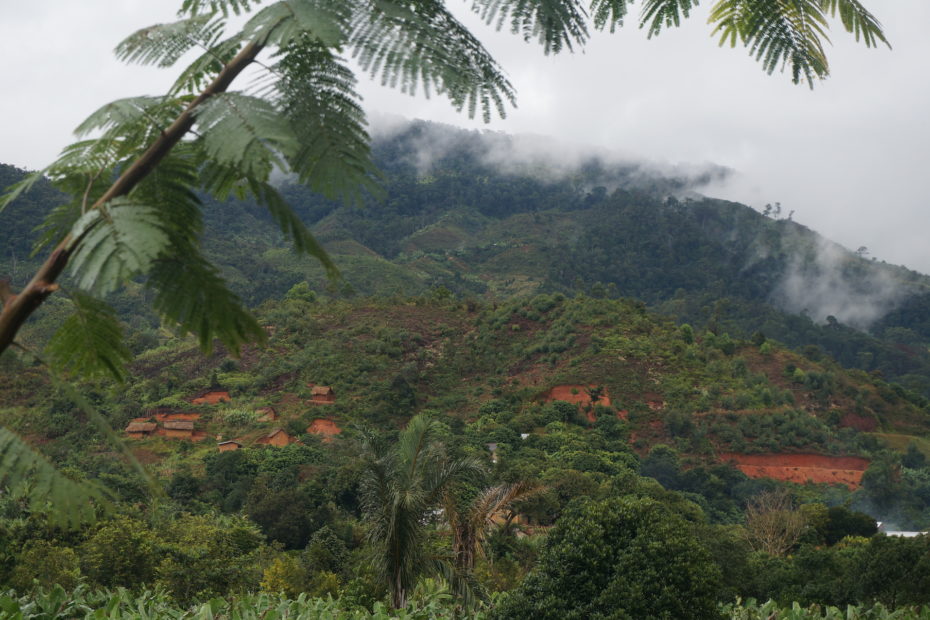ABOUT HALFWAY DOWN the page, on a decade-old version of Operation Fistula’s patient pre-op forms, there are two standard questions the admitting nurse would pose, one immediately following the other:
How many times have you given birth?
How many children are currently living?
The two numbers given in response were almost never the same.
Stillbirth and fistula are medically entwined. A discrepancy of one is almost inevitable – four births, three living children, for example. But the immense grief contained in these little pairs of numbers – seven and two, three and zero – is overwhelming, if you let your brain pause and reckon with it. Loss disguised as statistics, jammed in next to questions about age at menarche, height, marital status.
By the time most women seek treatment for their fistulas, months, years or even decades have passed since they endured the prolonged, obstructed labor that nearly killed them, almost certainly killed their baby, and led their bodies to betray them in a way that left them smelling as foul as a pit latrine.
The physical suffering is obvious and, by necessity, the focus of care for women living with fistula; the emotional and intellectual burdens of their fuller life experiences are often less visible.

Ranomafana: a small, rainforest-blanketed town in central Madagascar
IF YOU’VE WORKED in global health, you will inevitably have taken on a side gig: figuring out how to succinctly describe whatever issue you’re working on to people who may be genuinely interested but have little context to inform their understanding.
Sometimes, if I’m feeling lazy or I’ve read the room, I’ll toss out the phrase “maternal health” or “childbirth injury” and leave it at that. Usually, though, I launch into the paragraphs-long spiel it takes to explain a delicate, multi-tentacled problem like obstetric fistula.
I spent this past summer in Ranomafana, a small, rainforest-blanketed town in Vatovavy-Fitovinany (V7V to locals), in central Madagascar. Operation Fistula was supporting a fistula treatment campaign in V7V, and I was helping to coordinate the logistics of finding and mobilizing the women in need of repair, and of ensuring the district hospital was equipped to accommodate the influx of surgical patients.
My days were filled with bureaucracy, communication woes, equipment shortages, and the unique headaches that pop up when the local economy is entirely cash-based but the closest ATM is a 90-minute drive away. I rarely interacted with a patient, leaving those conversations and arrangements in the capable hands of community health workers.
In the months I was away in Madagascar, several close friends at home had babies, including two via C-section – the lack of which is exactly what can lead to a fistula.
With the childbirth experience so fresh in their minds, these new mothers were more attentive than most friends to my long-winded summaries of Operation Fistula’s summer project in V7V. But more than once, when I was prattling on about co-morbidities or inaccessible terrains, they would ask me to back up: “So wait. Did all these women lose their babies, on top of developing a fistula?”
It’s been nearly a decade since I last worked on fistula full-time. Their very basic question made me realize that in the intervening years, as I continued to study the issue from afar and then work on this very focused project in V7V, my brain had reorganized and re-prioritized what I knew about fistula.
And now, in talking about it, I was skipping over some of the points that would most deeply resonate with people who didn’t work in global health. I’d become so inured to those two mismatched numbers on our old questionnaire that I was obscuring a pivotal part of a fistula patient’s experience – the most universally human part of the experience, the loss of a child.
But these conversations were also a reminder that the more you learn and the more expertise you acquire about a particular subject, the harder it can be to hold it in your head at the same time. You know something so intimately that you don’t think to verbalize it to anyone else. The more information you have, the more challenging it can be to put it to effective use.

IN 2009, THE surgeon and writer Atul Gawande published a book called The Checklist Manifesto that laid out a modern problem: across sectors, we’re often failing not from ignorance but from ineptitude. We’ve reached a point where human knowledge has become so dense and comprehensive as to be unwieldy – we need better ways to keep track of everything we know so that we can apply it consistently when problems arise that we theoretically know how to solve.
“The volume and complexity of what we know has exceeded our individual ability to deliver its benefits correctly, safely, or reliably,” he wrote. “Knowledge has both saved us and burdened us.”
He emphasized that teamwork – bringing the perspectives of multiple experts together in collaboration – is integral to success.
As Operation Fistula wrapped the summer campaign in V7V and began to look ahead to an even more ambitious project in the country, Gawande’s approach got me thinking about what we know – really know – about both treating fistula and educating others about the issue (in my mind, two distinct but equally important aspects of working in the sector). Gawande’s thesis in The Checklist Manifesto is that what’s needed for a high level of performance is organization of information, ultimately in the form of a checklist (or checklists, plural).
A sprawling problem requires a lot of input from a lot of experts, and that information needs to be distilled into simple, digestible points you can refer back to even as contexts shift to account for variables.
Also, the experts can’t forget to talk to each other.

TO SAY THAT fistula is a sprawling problem is putting it mildly. It’s a problem that wouldn’t exist if all populations had paved roads, reliable electricity and skilled medical workers at hand anywhere a woman might go into labor. But such systemic issues won’t be remedied swiftly enough that we can ignore the consequences of their absence.
A lack of infrastructure is often at the core of the lag in maternal health care – and gender equality – in general. A new report from WHO/UNICEF zeroes in on these lingering inequalities, noting “women and children in sub-Saharan Africa [face] a substantially higher risk of death than in all other regions.”
It lays out the numbers:
“In 2018, 1 in 13 children in sub-Saharan Africa died before their fifth birthday – this is 15 times higher than the risk a child faces in Europe, where just 1 in 196 children aged less than 5 die.
“Women in sub-Saharan Africa face a 1 in 37 lifetime risk of dying during pregnancy or childbirth. By comparison, the lifetime risk for a woman in Europe is 1 in 6500. Sub-Saharan Africa and Southern Asia account for around 80% of global maternal and child deaths.”
If you work in the fistula sector, reading through these reports can be demoralizing in a very specific way: often, fistula is not mentioned. Women with fistula have almost died; because they didn’t, the quality of life they’re left with is an afterthought. An injury – even one as severe on the DALY scale as the amputation of a foot or living with Parkinson’s disease – doesn’t register as forcefully as a death. It’s simply not a priority.
Hearteningly, this hasn’t deterred the doctors, NGOs and individuals dedicated to the cause. In the last few decades, a number of organizations have made solid progress on refining the medical expertise needed for fistula care – a skilled surgeon is able to close a fistula in some 90% of cases. And on the education side, there’s been a slight uptick in public awareness, partly attributable to the United Nations Population Fund’s worldwide Campaign to End Fistula.
It’s accepted that about a million women around the world and 50,000 women in Madagascar are living with fistula. But another reason it’s so difficult to effectively combat fistula is that we actually have no idea how many people are affected. Data collection in the types of places where fistula is prevalent is notoriously difficult, and therefore the accepted numbers are essentially unreliable – a good guess.
The gathering of more concrete numbers has been one of Operation Fistula’s obsessions in recent years – it’s hard to fix a problem if you’re not certain you even understand the scale of it.

AS A SECTOR, we have more than enough information to assemble some respectable checklists surrounding protocols for the surgery itself, with input from both local and international experts who have worked in an extensive range of facilities and environments on the African continent and parts of Asia and the Middle East. Of course, individual surgeons have varying skill levels, and more surgeons are needed overall.
But the surgery is just one component of the treatment process. Most women living with fistula are impoverished and based in remote areas, often inaccessible to vehicles or even motorbikes. They tend to lack a formal education and may not even know their problem is a medical one with a medical solution. They may come from places where hospitals are feared, seen only as places where people go to die. They may feel great shame about their condition – or have that shame imposed on them by their community – and choose to stay hidden even from health workers trying to seek them out and help them access treatment.
So, while many fistula organizations know how to help once a woman is on the operating table, getting her to that point remains messy, frustrating and inconsistent. There are so many variables that can interfere with the broader journey. It involves training local health workers to know what questions to ask, working with traditional birth attendants on referring cases of obstructed labor, finding taxi drivers with the compassion to provide transportation despite the smell he’ll be inviting into his car, convincing patients that the care will be free, down to meals and soap to wash with while recuperating.
And it involves a reconsideration of what we think of as success. Eradication has always been the goal in the fistula sector, but a nagging loose end of this plan is the knowledge that true eradication will only be a reality if no new cases develop. Without better infrastructure in dozens of countries, women in obstructed labor will continue to die, or lose their babies, or develop a fistula after days of near-death. Eventual eradication can’t be the only goal for the women already suffering, right now.
Conventional thinking, then, dictates that we measure impact by the number of cases treated. But here there are problems, too. Without the data to inform what kind of dent these repairs are really making, it’s difficult to gauge progress. And sometimes, if a woman has endured a failed first or second surgery, she’ll keep trying, with each attempted surgery she receives counted as a new repair. The numbers are misleading.
Instead, with this new project, we wanted to approach the elimination of fistula by figuring out the part of the process that remains stubbornly out of grasp: what are the steps you need to take to clear an entire area of its fistula backlog?
How do you know when you’ve treated every woman in a certain community, and educated that community’s leaders on what to do if another woman needs help in the future? How do you create a consistent and reliable strategy for finding and mobilizing women in need of repair, and how do you ensure your protocols are replicable in any number of places where fistula is a problem? How do you get these women into the hands of the surgeon, so that every campaign doesn’t feel as if you’re starting from scratch?
In other words, what should our non-surgical checklists consist of?

THE PROJECT THIS past summer in V7V wasn’t necessarily what Operation Fistula sees as its core model. Treatment campaigns aren’t a sustainable, reliable system of care with permanent infrastructure – by their very nature, they’re triages. You bring in doctors from hours or days away, find as many local-ish patients as you can, and expend a lot of resources to treat them in a burst of activity over a matter of weeks, before everyone goes home again. Preferably, you’d have skilled surgeons permanently located in all areas of high prevalence, ready to operate whenever a patient appeared.
(Well, ideally, you’d want to prevent a fistula from occurring in the first place, as high-income countries have done for the past 100 years, but again I digress.)
In Madagascar, treatment campaigns remain necessary, due to the scope of the problem and the backlog of cases that need attention. With each campaign we learn something new that can inform future work.
Campaigns also have the benefit of bringing dozens of fistula patients together in the same room. Often, a treatment campaign is the first time they will have met another woman living with fistula. To realize they’re not alone is a powerful part of the healing process.
Through the end of 2020, the “how” of the care cycle is where we’ll be focusing. We’ve chosen 50 communes from two regions of Madagascar – including V7V – and we’ll be testing strategies to see what works where, and why. We want to rid entire communes of fistula, and replicate what we learn in more and more communes in the years to come. Most importantly, we want to share what we learn with partners in other countries – we want to make sure the experts are talking to one another.
Getting a fistula patient the care she needs starts well before she comes anywhere near an operating table, and involves a whole team of people along the way. It is frustrating and complicated. And admitting that it’s hard and that parts of the “typical” woman’s journey are still opaque is always in tension with an organization’s public-facing communications.
We’ll be using this next year to confront the frustrations head-on, and to try to fill in those gaps. And maybe we’ll even get to the point of creating a checklist or two.
